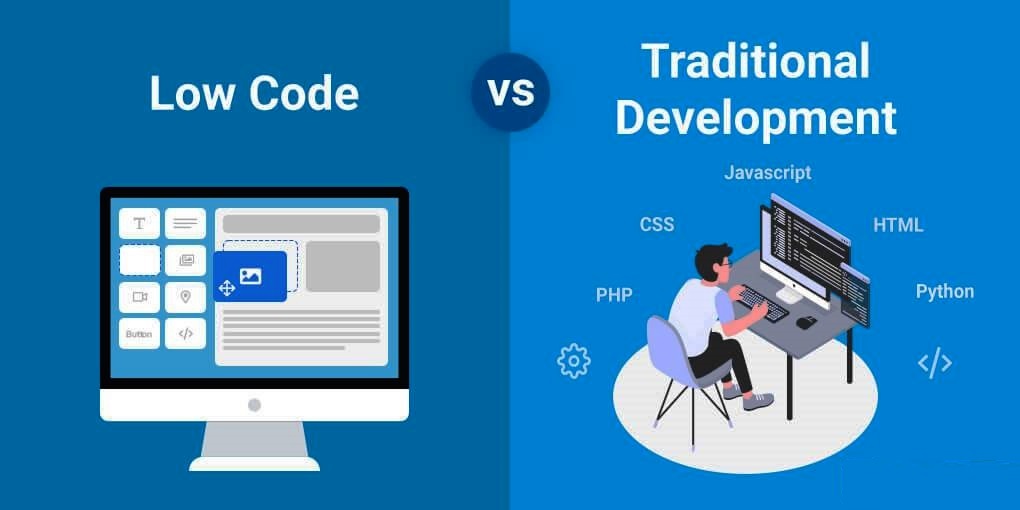Low-code and no-code development platforms are software development tools that allow users to create applications and software solutions using visual interfaces, pre-built templates, and drag-and-drop functionality, rather than traditional coding techniques. These platforms aim to simplify the software development process, enabling users with limited coding experience to create applications quickly and easily.
Low-code platforms typically require some coding knowledge, but allow users to create applications by assembling pre-built components and workflows using a visual interface. These platforms offer greater flexibility than no-code platforms, but may require some level of coding expertise to use effectively.
No-code platforms, on the other hand, are designed for users with little or no coding experience. They provide pre-built templates and visual interfaces that enable users to create applications by dragging and dropping pre-built components and workflows. These platforms are typically more limited in functionality than low-code platforms, but offer a faster and more accessible development process.
Some of the key benefits of low-code and no-code development platforms include:
Faster development: Low-code and no-code platforms allow users to create applications and solutions quickly, without requiring extensive coding knowledge or experience.
Increased productivity: By simplifying the development process, low-code and no-code platforms can increase the productivity of developers and non-developers alike.
Cost savings: Low-code and no-code platforms can help businesses reduce development costs by reducing the need for highly skilled developers and streamlining the development process.
Flexibility: Low-code and no-code platforms offer greater flexibility than traditional development approaches, allowing users to adapt and modify applications quickly and easily.
Accessibility: By reducing the need for coding expertise, low-code and no-code platforms can make software development more accessible to a wider range of users.
Low-code and no-code development platforms are increasingly popular in a variety of industries, including finance, healthcare, and education, and are expected to play a significant role in the future of software development.




